Best Asus laptops in 2024
The best Asus laptops, according to our testing

1. The list in brief ↴
2. Best overall
3. Best Chromebook
4. Best gaming
5. Best workstation
6. Best MacBook alternative
7. Best handheld
8. How to find the right laptop
9. How we test
10. Why trust Laptop Mag
The best Asus laptops you can get are hidden among the company's expansive portfolio of laptops. It can be overwhelming to figure out which one is best for you. There are so many! Good news: we've sifted through Asus' massive line-up of laptops so you don't have to.
The best laptops from Asus are known for their mind-blowing, state-of-the-art innovation. Asus' impressive innovations (we love their dual-screen laptops) and economically priced notebooks keeps this laptop maker high in the industry's esteem.
After all, Asus doesn't want to get lost in a sea of boring laptops. Instead, it wants to stand out of the crowd and offer powerful performance in a laptop while still tackling the challenge of portability. That being said, we've tested a cornucopia of Asus laptops, including their battery runtimes, display quality, sturdiness, and more.
Asus announced exciting new laptops at CES 2024, including the Asus Chromebook CM30 which could knock its predecessor, the CM3, off this list. Following that event, we reviewed the new Asus Zephyrus G14, which made a solid comeback.
Below we've compiled a well-tested list of Asus' best laptops.

Rami loves a great Asus laptop, especially the gaming variety. After reviewing dozens of laptops over 6+ years, Rami can spot a star laptop in any category, whether it's cheap or premium. His one and only five-star laptop review was of the Asus ROG Zephyrus G14. It went downhill over the years, but the recent entry is pretty solid. Extensive testing and hands-on experience taught Rami how to ensure that you will get the most for what you're paying for with the best Asus laptops.
The Quick List
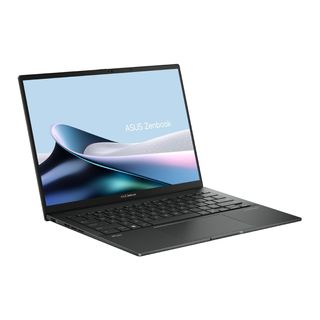
Best overall
The Asus Zenbook 14 OLED is a dream laptop for Asus lovers. Featuring a gorgeous OLED display, a powerful Intel Core Ultra 7 processor, and almost 16 hours of battery life!
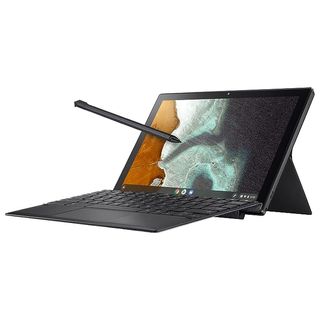
Best Chromebook
The Asus Chromebook Detachable CM3 can survive for nearly 12 hours on a single charge. It's also a 2-in-1, which means that it can transform into a number of different positions with that beautiful 10.5-inch, 1900 x 1200-pixel touchscreen.
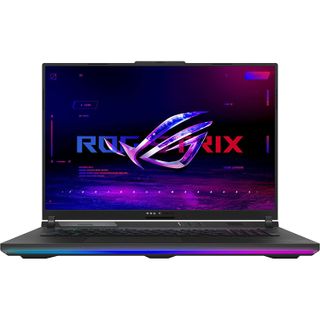
Best gaming
The Asus Strix Scar 18 is large and in charge. But it’s not just the 18-inch display that wows The uber-powerful Core i9 CPU and Nvidia RTX 4090 GPU make the Strix Scar an undeniable beast of a gaming laptop.
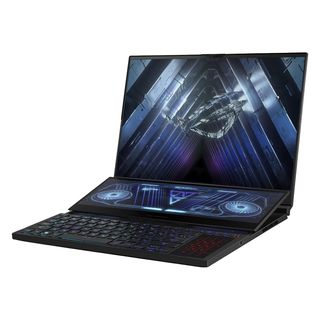
Best workstation
The Asus ROG Zephyrus Duo 16 is a beautiful monstrosity with the bizarrest deck layout I’ve ever seen, but against all odds, the design works perfectly for anyone with a multitask-heavy workflow.
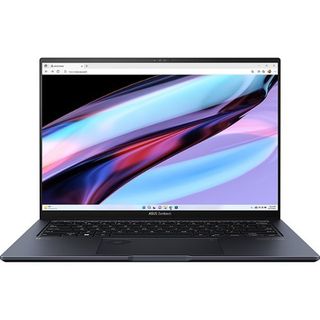
Best MacBook alternative
Matching the MacBook Pro 14’s utilitarian design and performance is no easy feat. Still, the Asus ZenBook Pro 14 OLED makes it look effortlessly. However, it’s a little short on battery life.
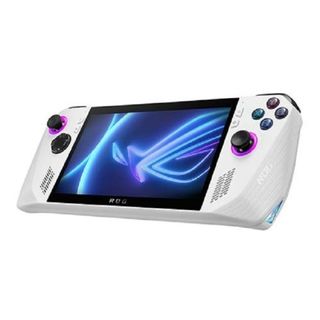
Best handheld
While the Asus ROG Ally may not technically be a gaming laptop, its Windows 11 OS and excellent performance metrics make one thing clear: This is a great gaming laptop at heart.
Best Overall





Specifications
Reasons to buy
Reasons to avoid
It's not often I get to crown a laptop that starts under $1,000 as the best for a whole brand's page. That's right, the Asus Zenbook 14 OLED (Q425M) is not only a killer laptop with incredible battery life but it's also surprisingly affordable. It's our best for students laptop on our best laptops page, and it even made its mark on the laptops with best battery life page for its incredible 15 hours and 52 minutes of battery life.
Despite its price, the Zenbook 14 jumps in with Intel's latest Core Ultra 7 155H, the which offers the power to get you through a modest number of tasks. A Photoshop editing session combined with a couple dozen Chrome tabs and spreadsheets weren't enough to slow it down.
It's not just performance and battery that takes this machine to the top. I love OLED displays, and my favorite part about the Zenbook 14 is its 14-inch, 1080p, OLED display. This baby covers 79.8% of the DCI-P3 color gamut and averages 339 nits of brightness. That means the Zenbook 14 will be there for you at the end of the day when you want to stream your favorite shows on a gorgeous window.
That battery will get you through work or school, but what about the keyboard? These 1.4mm deep keys will carry you throughout the day thanks to their pleasant click-to-pressure ratio. Take comfort in the comfort that this keyboard graces your fingertips with.
Then we've got the bumpin' Harman Kardon and Dolby Atmos-certified super-linear speakers that had us headbanging subconsciously. The Zenbook 14 captured quality mids and highs along with a wide bass.
The device is also remarkably thin, sliding in at 0.59 inches. Slot this into a medium-sized purse and you're good to go. You can't forget about the webcam privacy shutter, which is a great feature in this day and age.
See our full Asus Zenbook 14 OLED (Q425M) review.
Best Chromebook





Specifications
Reasons to buy
Reasons to avoid
The Asus Chromebook Detachable CM3 is not only the best Asus Chromebook, it's one of our favorite Chrome OS devices we've ever tested. Yes, it’s a bit on the older side, but it’s incredibly versatile thanks to its laptop-to-tablet nature, built-in stylus, and long battery life.
It lasted 11 hours and 41 minutes on the Laptop Mag battery test. That’s enough time to outlast the average work or school day. You can even get some overtime or a head start on homework. Its weight and size make it that much more portable, at 2 pounds (with keyboard and case) and 12.7 x 8.9 x 0.68 inches, respectively.
Speaking of its design — you can’t get more versatile than a durable 2-in-1 detachable. What makes it durable? It meets U.S. MIL-STD810H standards for bumps, shocks and temperature changes. Otherwise, its design lets you use it as a laptop or tablet, and its cover lets you stand it up vertically as well. And unlike some premium products, this Chromebook sports a built-in stylus, so you don’t have to pay extra.
Then we’ve got the 10.5-inch, 1900 x 1200 touchscreen display, which wowed us with its color and brightness. The Asus Chromebook Detachable CM3 covered 93.6% of the DCI-P3 color gamut and averaged 386 nits of brightness. That’s more impressive than some premium laptops we test.
Unfortunately, you’re not getting much performance out of the MediaTek MTK 8183 processor, 4GB of RAM, and 64GB of eMMC storage. However, if you buy it directly from Asus, you can get it for cheap. Don’t purchase this device for anything over its launch price, which started at $329.
Overall, the CM3 is a fantastic device for kids, students, or anyone who needs a rugged, portable device for a budget-friendly price.
See our full Asus Chromebook Detachable CM3 review.
Best gaming

Asus ROG Strix Scar 18 playing Cyberpunk 2077.




Specifications
Reasons to buy
Reasons to avoid
The Asus ROG Strix Scar 18 is the monster under the bed, if your bed had the under glow of a Fast & Furious street car. Packed with Intel's Core i9-13900HX processor and Nvidia's RTX 4090 GPU, its chips are powerful and highly overclockable so you can squeeze every drop of performance out of the system.
The king of gaming laptops crushed our benchmarks and their families. For the most part, it maintained a three-digit result during gaming tests. On the Assassin's Creed Valhalla benchmark, the Strix sped through with a scorching 154 fps. It reached 181 and 152 fps on Rise of the Tomb Raider and Grand Theft Auto V, respectively.
Meanwhile, the 13th Gen CPU scored 19,233 on the Geekbench 5.4 overall performance test, which smoked the average premium gaming laptop (practically doubling it). Our video transcoding test was no match, as the Strix completed it in just 2 minutes and 49 seconds, which is over a minute faster than the MacBook Pro 16-inch M2 Pro Max. And the Strix's pair of 1TB SSDs dominated our file transfer tests.
We also loved the design, which had a mysterious Blade Runner vibe. The 18-inch, QHD+ (2560 x 1600), 240Hz display also served up a beautiful picture with buttery smooth rendering.
However, be prepared to make some sacrifices. You're stuck with a measly 4 hours and 26 minutes of battery life. Naturally, we hate its 720p webcam. Even if it wasn't great, we expected a 1080p shooter at this eye-watering price.
Despite that, the Asus ROG Strix Scar 18 is the gaming laptop to beat. Seriously, it's at the top of our best gaming laptops page.
Unfortunately, the webcam is rough, so if that's an issue for you, we recommend checking out the best webcams.
See our full Asus ROG Strix Scar 18 review.
Best Workstation



Specifications
Reasons to buy
Reasons to avoid
Are you ready to work on a dual-screen monstrosity that emphasizes performance and productivity? The Asus ROG Zephyrus Duo 16 features the most bizarre deck layout, but the design works perfectly for anyone with a multitask-heavy workflow.
Let's start with its displays (plural). The main display is a 16-inch, 1600p, 240Hz Mini-LED panel that wowed us with its 121% coverage of the DCI-P3 color gamut and its stunning 684 nits of brightness. Finding an equally bright and colorful display of this caliber is like catching a shiny Pokémon. But that's not the only display!
Then we have the 14-inch, 2560 x 734-pixel ScreenPad Plus, which encompasses half of the deck. Its a touchscreen panel that's incredibly responsive, which makes it perfect for those managing multiple projects, including video and photo editing.
Now let's dive into the awesome specs, including an AMD Ryzen 9 7945HX CPU, an Nvidia GeForce RTX 4090 GPU with 16GB of VRAM, and 32GB of RAM. We ran the Duo 16 through Grand Theft Auto V and Borderlands 3 where it achieved an excellent 158 fps and 135 fps, respectively. Other laptops with an RTX 4090, like the Razer Blade 16, got 164 fps and 142 fps, respectively. While the Razer technically did better, the Duo 16 offers comparable performance.
Unfortunately, the Duo 16 will set your bank account aflame with a price tag nearing $5,000. This six-pound gaming laptop will also require you to up your gym game. And you need to get used to the keyboard and touchpad — no, they are not where they should be.
Forget about using this machine unplugged. The Zephyrus Duo lasted 4 hours and 7 minutes on our battery test with on display enabled. It survived 3 hours and 32 minutes with two displays.
But overall, the Asus gaming laptop will be an excellent investment for those who constantly cross-reference documents for work — this chunky money is a major time saver.
See our full Asus ROG Zephyrus Duo 16 review.
Best MacBook alternative





Specifications
Reasons to buy
Reasons to avoid
Are you looking for a MacBook Pro equivalent for Windows that you don’t need to pay $3K+ to get? That’s why the Asus Zenbook Pro 14 OLED is here. Starting under $1,999, you get quality performance, a gorgeous display, and strong speakers that a content creator could only dream of.
The Zenbook Pro 14 OLED is stacked with an Intel Core i9-13900H CPU, 32GB of RAM, a 1TB SSD SSD, and an Nvidia GeForce RTX 4070 GPU with 8GB of VRAM. The Pro 14 scored 13,249 on the Geekbench overall performance test and 19,010 on the 3DMark Fire Strike synthetic graphics test, which crushed the average laptop in its category.
Let’s move on to that beautiful 14-inch, 2800 x 1800, 120Hz, 16:10 OLED display. The Pro 14 reproduced 78.2% of the DCI-P3 color gamut and averaged 346.6 nits of brightness. That’s nearly on par with a MacBook Pro. The one advantage that the Pro 14 has is its OLED panel, which presents deeper blacks and bolder colors.
For a beast of a machine, it’s rather lightweight and slim as well. It comes in at 3.5 pounds and 12.67 x 8.79 x 0.7 inches. And packed within that chassis are Harmon Kardon-tuned speakers, which showcase very discerning, clear audio with depth.
However, the only place where the MacBook Pro 14 dominates the Zenbook is in battery life. The Pro 14 lasted only 6 hours and 51 minutes on our battery test. It can get you through most of the workday, but you’ll have to plug it in before the day closes.
Despite that, the Asus Zenbook Pro 14 OLED is an excellent option. If you’re doing some serious video-editing, you’ll likely be plugged in anyway to take full advantage of the GPU.
See our full Asus Zenbook Pro 14 OLED review.
Best handheld





Specifications
Reasons to buy
Reasons to avoid
The last thing I imagined was Asus to pump out one of our favorite devices in the past decade that wasn't a laptop. Yep, this is the Asus ROG Ally, one of the few trending handheld gaming devices that launched ever since the Steam Deck made its mark on the world.
Outside of its incredible concept, the greatest feature of the ROG Ally is the display. It's smaller than a traditional gaming laptop, but it looks way better. At 465 nits of brightness, the 7-inch, 1920 x 1080 display is brighter than some premium laptops. It also supports a 120Hz refresh rate and AMD FreeSync with a 7-millisecond response time.
Before you start jumping up and down, temper your expectations. You won't play games on high settings, so put that out of your mind. Despite that, the Ally pushed hard on our testing. On the Assassin’s Creed Valhalla benchmark, the ROG Ally scored 29 fps at 1080p on High. You'll likely get at least 60 fps if you turn that to low.
Surprise! The ROG Ally weighs only 21.4 ounces and measures 11 x 4.4 x 0.8 inches, which makes it the most portable device on this page. I threw this thing in my purse and I still had room for my usual things.
So what's wrong with it? The battery life. You’re getting 1 hour and 43 minutes — that is persistent gaming. If you’re not gaming, it lasts 5:51. However, if we consider the use case, that's not a great way to just the device. We don't use the Nintendo Switch to browse the web, so why do it on this?
Asus are the kings of innovation, so while I am shocked that the Ally exists, it makes sense. If you're looking for controller-based gaming rig to play on the go, the Asus ROG Ally is the one for you.
See our full Asus ROG Ally review.
How to choose the best Asus laptop for you
Do your intensive daily workloads require more RAM than the average Joe? Are you a video editor who needs extra storage? Are you a gamer who wants a powerful GPU? Sorting through the best Asus laptops to fit your lifestyle is a tricky business.
To make your shopping process a little easier, we put together some tried-and-true guidelines to help you choose the best laptop.
Budget: What you get for the money.
You might struggle to find decent Windows laptops and high-quality Chromebooks for under $500, but they're out there. However, better mainstream laptops usually cost more than $700 and premium Ultrabooks can run over $1,000. The best gaming laptops can cost $2.000 and up, but you can play the latest titles at decent frame rates on gaming laptops under $1,000.
Remember that the bigger the specs, the bigger the gaps in price points. So, list the apps you use or games you play and start checking the PC requirements. For traditional machines, you can likely take on anything non-graphic-intensive with a Core i7 or higher. In terms of gaming laptop, almost any with a 40-series GPU can play an indie game, but if you're dabbling in AAA titles, you have to decide which settings you're comfortable playing on.
Screen Size: 12 to 14 inches for Portability
Knowing a laptop's screen size tells you a lot about its portability overall. If you want to use your computer on your lap or carry it around a lot, go for one with a 12, 13 or 14-inch display. If you want to use the computer on tables and desks and won't carry it around much, a 15-inch model may give you more value. Some gaming rigs, media machines and workstations even have 17 or 18-inch screens, but those are hardest to carry.
Do you want a 2-in-1 or a clamshell?
More and more of today's laptops are 2-in-1s with screens that either bend back 360 degrees or detach so you can use them as tablets. If you like the idea of using your laptop in slate mode for drawing, media consumption or just using it standing up, a 2-in-1 could be for you. However, you can often get better features or a lower price by going with a traditional clamshell-style laptop.
How much battery life do you need?
If you're on the go, you're going to need to make sure you snag a laptop that lasts more than 10 hours. But if you're a homebody or you're tied to your desk all day, perhaps you can sacrifice some battery life and save some money in the process. Check out our laptops with the best battery life list.
Specs: 1080p / Core i5 / 8GB Are Best Bets
You can spend a lot of time delving into specs, but here are the key components to think about. If you just want really good mainstream performance, go for a Core i5 CPU, 8GB of RAM, a 256GB SSD and a 1080p screen.
How We Test the Best Asus Laptops
We put each laptop through extensive benchmark testing — both synthetic and real-world — before they end up in the hands of our reviewers. We evaluate each aspect of the laptop, including its performance, battery life, display, speakers and heat management.
In our benchmark testing, we use a Klein K10 colorimeter to detect the brightness and sRGB color gamut of the laptop's display. For performance testing, we run the laptop through a gauntlet of benchmarks, including Geekbench 5 and 6 and 3DMark professional graphics tests.
To determine real-world performance, we task the laptop to convert a 4K video to 1080p resolution and to duplicate a 25GB multimedia file. Our real-world graphics test is the Sid Meier's Civilization VI: Gathering Storm benchmark with medium settings at 1080p resolution.
We also run heat tests by playing a 15-minute full-screen video and measuring temperatures in different areas of the laptop. Last but not least, our battery test consists of continuous web surfing over Wi-Fi at 150 nits of brightness. For MacBooks and premium Windows 11 laptops, a runtime of over 9 hours is considered a good result whereas gaming laptops and workstations that can stay powered for longer than 5 hours deserve praise.
These tests are complemented with extensive hands-on testing from our reviewers who critique everything from the laptop's materials to the feel of its touchpad.
See this page on How We Test Laptops for more details on our benchmarking procedures.
Why Trust Laptop Mag
Laptop Mag reviews over one hundred different laptops every year, from paperweight ultralights to everyday workhorses to lumbering gaming notebooks that scorch the frame rates of even the hottest AAA games. We're not just experts in the laptop field, as we go one step further by meticulously testing smartphones, tablets, headphones, PC accessories, software, and even the latest in gaming.
We are 100% independent and have decades of experience to help you buy with confidence. In fact, Laptop Mag has been testing and reviewing products for three decades, and we continue to deliver trustworthy reviews you can rely on.
Our experienced team of writers and editors scour the available information about the laptop and put it through its paces to determine which is best for you. But before they start, the testing team subjects each system to a rigorous regimen of synthetic and real-world tests to see how a system handles the type of work and games you’re most likely to throw at it.
Our editorial trustworthiness is enforced by one of the world's largest technology publishers, Future Publishing. As a company, we have unrivaled experience across every tech sector — and we're the group's specialist for all things mobile tech.
Stay in the know with Laptop Mag
Get our in-depth reviews, helpful tips, great deals, and the biggest news stories delivered to your inbox.

Rami Tabari is an Editor for Laptop Mag. He reviews every shape and form of a laptop as well as all sorts of cool tech. You can find him sitting at his desk surrounded by a hoarder's dream of laptops, and when he navigates his way out to civilization, you can catch him watching really bad anime or playing some kind of painfully difficult game. He’s the best at every game and he just doesn’t lose. That’s why you’ll occasionally catch his byline attached to the latest Souls-like challenge.